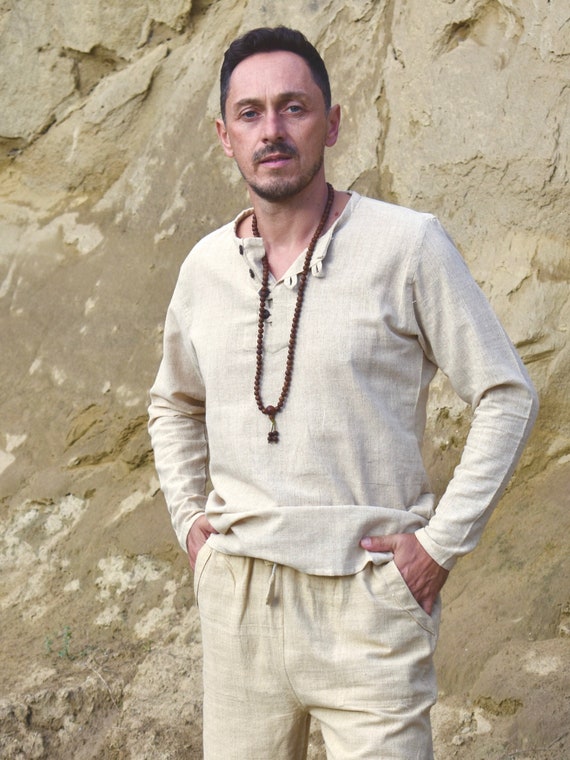Top Reasons On Deciding On Hemp Clothing
Wiki Article
What Makes Hemp Durable And Durable? Is It Also More Regenerative?
Hemp's inherent properties, as well as its cultivation methods, make it more biodegradable and durable than cotton. Here's why- Biodegradability-
Natural Fiber- Hemp fibers are a plant that is biodegradable. Textiles and clothing made of hemp degrade over time. The waste is then returned to the earth with no long-lasting effects. This contrasts with synthetic fibres like polyamide that can break down over a period of hundreds of years.
Hemp Textiles Lack Synthetic Additives The majority of Hemp fibers typically don't contain synthetic additives. Contrary to cotton fabrics, which may contain synthetic chemicals (such as dyes and finishers) which can hinder biodegradation, hemp textiles don't.
Durability-
Hemp fibers can be characterized by their strength and durability. Clothing and textiles made from hemp tend to be less likely be damaged, and last longer than cotton-based products. The strength of hemp clothing means that it can endure longer wear and washing cycles before degrading.
Hemp fabrics are more resistant to pilling than cotton. This attribute helps to prolong their life and overall quality.
Regenerative Agriculture-
Soil Quality Hemp has regenerative characteristics when grown in a sustainable manner. Hemp can improve soil quality by improving the health of soil. The roots that are deep in hemp help prevent erosion of soil. This aspect of regenerative could leave the soil in a better state for the future growth.
Low environmental impact - Sustainable hemp cultivation techniques require the use of a minimal amount of pesticides. Contrary to conventional cotton farming, the chemical use can cause soil degradation and pollution of water.
Water Efficiency-
Low Water Requirements- Hemp generally requires less water than cotton for development. Because of its drought resistance it can be grown with minimal or no irrigation. This makes the plant the ideal choice for those that have limited water resources, such as dry areas.
Hemp can also be included in the crop rotation system to enhance soil health and decrease the risk of disease and reduce depletion. The practice of crop rotation in the cotton industry is not as widespread.
The versatility of hemp allows it to be used for many different applications, including clothing, textiles, paper and building materials. Hemp can be grown in many ways, including renewable and sustainable.
While hemp can provide these benefits, it is essential to be aware that both cotton and hemp are grown sustainable or not, based on the farming practices used and the processes used. It is recommended to select hemp products that are produced using eco-friendly and ethical practices. This can maximize their environmental benefits. In a similar way using organic cotton may mitigate some of environmental issues associated with conventional cotton production. Have a look at the recommended hemp clothing for site recommendations including 100 hemp t shirt, mens hemp trousers, hemp yoga pants, hemp shirts, hemp hoodie, dash hemp clothing, hemp garments, hemp tees wholesale, women's all seasons hemp canvas bomber hoody jacket, mens hemp trousers and more.

How Does Hemp Improve The Carbon Sequestration Process And Sustainably?
Carbon Sequestration Hemp fibers have numerous environmental benefits which include sustainability, crop rotation, and carbon sequestration.
Hemp develops quickly and matures within 70 to 120 days, depending on variations and the conditions under which it grows. Photosynthesis is the process by which hemp plants absorb CO2 from the atmosphere during their rapid growth. This carbon uptake can significantly contribute to carbon sequestration, which reduces CO2 levels in atmosphere.
Hemp is famous for its prolific production of biomass. The plant's dense and tall foliage generates a large quantity of organic substances. When the biomass is incorporated into the soil or used in various applications, it can contribute towards the growth of organic matter and carbon.
Sustainability:
Minimal Chemical Use- Hemp cultivation often requires fewer herbicides and pesticides made of synthetics when compared to some other crops, like cotton. Its natural resistance to diseases and pests reduces the need for chemicals. Particularly, organic hemp farming emphasizes sustainable practices, since it doesn't use chemical pesticides.
Water Efficiency- Hemp is a relatively water-efficient plant that thrives even without irrigation, particularly when compared to traditional cotton that is water-intensive. This helps to make it more sustainable in areas with limited water resources.
Hemp's deep-rooted system can improve the health of the soil. Its roots help prevent erosion of soil by stabilizing the soil's structure and reducing runoff. Hemp is a great plant to boost soil microbial activity. This helps to improve soil nutrient cycle and fertility.
Crop Rotation- Hemp can be integrated in crop rotation systems. Crop rotation refers to the process of rotating crop varieties in a field over time. This practice can help break the cycles of disease and pest, reduce soil erosion, and improve the soil structure. Hemp's contribution to rotation of crops helps sustain farming practices.
Crop Rotation
Hemp can be included in the rotation of crops along with other crops, such as legumes, grains or even vegetables. Diversification helps farmers to maintain soil health and reduce disease and pests. It also aids in balancing nutrition cycles.
Soil Improvement- The hemp's deep roots can penetrate the soil and aerate it, reducing compaction and enhancing water infiltration. The soil structure improves after the harvest of hemp that benefits other crops.
In summary, hemp fibres improve the storage of carbon, sustainability, and crop rotation practices due to their rapid growth and biomass production. They also require minimal chemical inputs, make good use of water, and are compatible with crop rotating systems. The hemp fibers that are produced by this sustainable, regenerative farming practice can be a fantastic option for textiles. Check out the top rated https://www.koraoutdoor.com/collections/hemp for more examples including 100 hemp clothing, jungmaven clothing, mens hemp t shirts, patagonia iron forge jacket, hemp shirts mens, hemp apparel, organic hemp underwear, hemp button shirt, jungmaven sweatshirt, patagonia hemp island pants and more.

What Are The Advantages Of Bamboo Clothing For Environmental Sustainability And Comfort?
Bamboo clothing is a fantastic choice for comfort and the environment.
Softness Bamboo fabric is known for its exceptional suppleness. It has a soft velvety texture that is comfortable to wear. Bamboo clothing is extremely soft and is popular for activewear, loungewear, intimate clothing, and other types of clothing.
Bamboo fibers breathe well and are able to absorb moisture. Micro-gaps in bamboo allow air circulation and help keep your body cool. The moisture-wicking properties help pull sweat away from the skin, reducing the feeling of dampness.
Bamboo clothing has excellent properties for thermoregulation. It is able to help keep you warm in colder temperatures as it entraps warmth close to the skin. It also helps to remain cool during hot temperatures because it lets excess heat and moisture escape. Bamboo is able to adapt to a variety of temperatures, it's suitable for any season.
Hypoallergenic Bamboo fabric is hypoallergenic, and gentle on sensitive skin. It is less likely to cause irritation or allergic reactions. This makes it a suitable option for those who suffer from skin sensitivities or allergies.
Bamboo fibers are naturally antimicrobial and will stop the growth of bacteria that cause the odor. This attribute contributes to the breathability and comfort of bamboo clothes even during physical activity.
Environment-
Bamboo is a resource that's highly renewable and sustainable. It is one among the fastest growing plants and requires minimal water. There are no herbicides, pesticides, or other chemicals are required for the cultivation of bamboo. Bamboo can be harvested without harm to the plant as its roots regenerate.
Bamboo is water-efficient and has a low consumption. It can thrive with minimal irrigation, and is often cultivated using only rainwater and reduces the environmental impacts associated with water usage in agriculture.
Biodegradability - Bamboo clothing decomposes naturally over time after it is thrown away. This property reduces the accumulation of textile waste that is non-biodegradable landfills.
Carbon Sequestration. Bamboo is a great plant to capture CO2 in its rapid expansion. Bamboo cultivation is a carbon sink which can aid in reducing climate change by reducing greenhouse gases.
Chemical Reduction- The manufacturing of bamboo fabric typically involves fewer chemical treatments and processing steps compared to some other textiles, reducing the environmental impact resulting from textile production.
Closed-Loop Production- Some bamboo fabric production processes use closed loop systems, which recycle and reuse water as well as chemicals, thus reducing the amount of waste and pollution.
Be aware that the effects of bamboo clothes on the environment could be different based on the kind of manufacturing process used and the source of bamboo used and sustainably from bamboo forests. To get the most environmental benefit, buyers should seek out bamboo clothing that are made using sustainable and ethical methods. Read the most popular bamboo clothing examples for website recommendations including bamboo shorts mens, bamboo sweater, bamboo apparel, organic bamboo pajamas, bamboo dress shirt, bamboo maternity wear, short sleeve bamboo pajamas, ladies bamboo t shirts, bamboo clothing sustainable, bamboo apparel and more.
